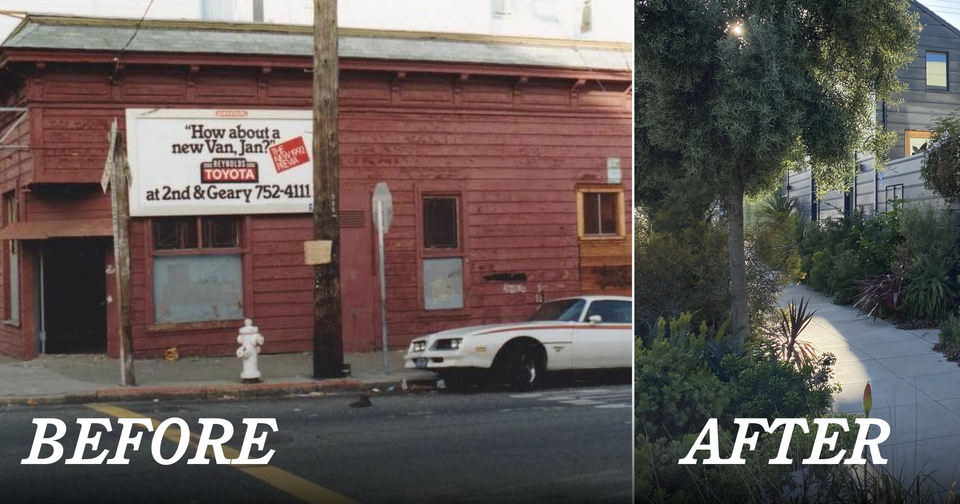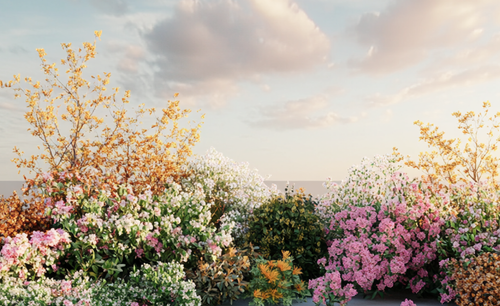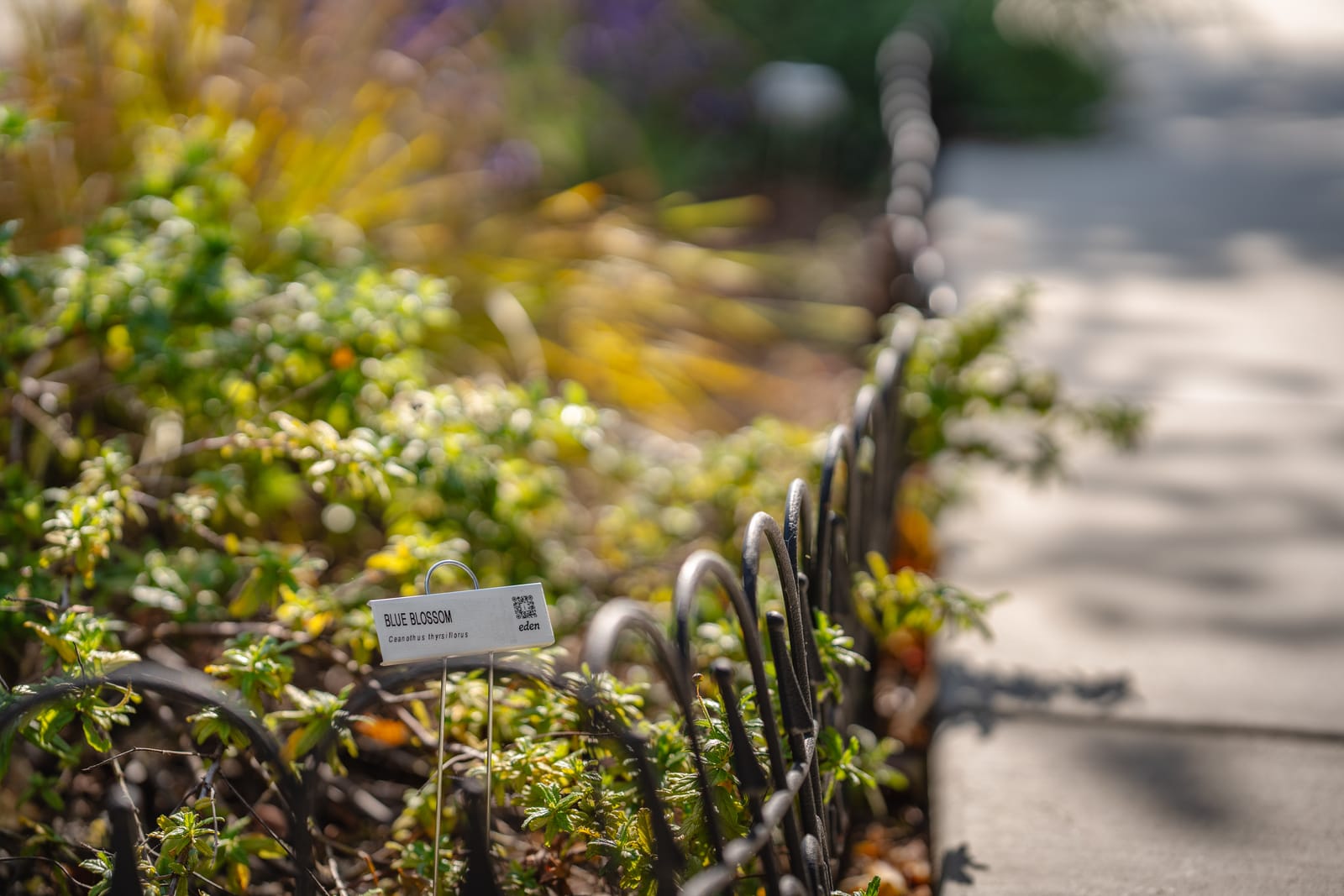I. Introduction
Sidewalk gardens are exactly what they sound like—gardens installed in the sidewalk space between the curb and your property line. In a city like San Francisco, where every bit of green space counts, sidewalk gardens offer a powerful (and beautiful) way to reclaim underused concrete for the public good.
They cool the street, support pollinators, absorb stormwater, and soften the urban landscape. The best part? San Francisco actively supports these kinds of projects through its permitting system and greening programs.
In this guide, we’ll walk you through everything you need to know to plan, permit, plant, and maintain a sidewalk garden—the right way.

II. Understand What You’re Working With

A. Is it really a sidewalk garden?
Start by identifying your space. Sidewalk gardens exist in the public right-of-way—the space between the curb and your front property line. In San Francisco, this includes sidewalk strips, curbside medians, and sometimes even corner bulb-outs. If it’s fenced in, it’s likely part of your front yard, not a sidewalk garden.
B. Assess your site
- Width of the sidewalk strip: The city requires a minimum 4-foot-wide clear path for pedestrians, so measure your space accordingly.
- Sun exposure: Does your site get full sun, partial shade, or is it shaded most of the day?
- Soil conditions: Many sidewalk strips have compacted or low-quality soil. Test what you’re working with and plan for compost or soil amendment.
- Pedestrian flow: Consider foot traffic and how people use the space. Make sure you’re not blocking access or visibility.
III. Know the Rules (Permitting Basics)
A. SF Sidewalk Landscape Permit
If you’re planning to remove any concrete, you’ll need to apply for a Sidewalk Landscape Permit from SF Public Works.
- Where to apply: SF Public Works Website
- Cost: Typically ranges from $160 to $215
What to check before you file:
- Measurements: You’ll need the dimensions of the planting area, and the width of the remaining pedestrian path (must be at least 4 feet).
- Utilities: Call 811 to locate underground utilities. Avoid planting over water, gas, or power lines.
- Parking signs & meters: You must leave 3 feet of clearance around signs, hydrants, and driveways.
- Existing street trees: Work around established street trees; you may need an additional permit if you're planting or removing trees.
B. Key city regulations to follow
- Leave at least 4 feet of unobstructed sidewalk for pedestrians
- Stay at least 2 feet away from the curb
- No tall plants near intersections (limit height for visibility)
- Avoid thorny, spiky, or toxic plants near pedestrian areas
IV. Design Your Garden

A. Choose the right layout
Common layouts include linear beds, tree surrounds, corner bulb-outs, or clustered plots in wider sidewalk zones. Include stepping stones or gravel pathways to make it easy to access plants for maintenance.
B. Choose the right plants
Focus on drought-tolerant, low-maintenance species that thrive in San Francisco’s Mediterranean climate.
- Use the city’s Thrifty 150 list as a guide
- Prioritize California natives and pollinator-friendly plants
- Combine perennials, groundcovers, and small shrubs for visual interest
V. Gather Materials & Tools
A. Materials & Tools Checklist:
- Shovel, mattock, or pry bar (for concrete removal or soil prep)
- Compost, mulch, and soil amendments
- Plants, plugs, or seeds
- Optional: drip irrigation system or soaker hoses
- Edging materials (brick, metal, or recycled composite)
B. Hiring a Contractor
If you're removing concrete or need help installing a new layout:
- Look for licensed contractors with experience in public landscape projects
- Ask for references and photos of past sidewalk work
- Expect to pay: $20–40/sq ft for full-service installation
- Timeline: Most projects take 1–2 days to remove concrete and 2–3 more to install soil and plants
C. Buying Plants
- Bay Area nurseries that specialize in native and drought-tolerant plants:
- Flora Grubb Gardens (Bayview)
- Annie’s Annuals & Perennials (Richmond)
- Watershed Nursery (Richmond, CA)
- East Bay Wilds (Oakland)
- Seeds vs. Plants: Seeds are more affordable but take time; 4-inch pots or 1-gallon plants offer faster results
- Costs: Expect $5–12 per plant depending on size and species
VI. Prepare & Plant
A. If removing concrete
- Hire a contractor or rent a concrete saw (if DIY)
- Haul away rubble according to city waste rules
- Add soil to a depth of 12–18 inches and test for drainage
B. If converting dirt strips
- Loosen compacted soil with a digging fork
- Mix in compost
- Position plants while still in pots to plan layout
- Plant, water in, and mulch to 2–3 inches deep
VII. Maintain Your Sidewalk Garden
- Water regularly for the first 1–2 years to help roots establish
- Check irrigation systems seasonally
- Weed once a month or as needed
- Prune for shape and safety (don’t block sidewalks)
- Replenish mulch each spring
- Consider adding discreet plant labels to educate the community
VIII. Resources and Inspiration
- SF Public Works Permit Page
- Friends of the Urban Forest
- Native Plant Nurseries in the Bay Area
- Follow local sidewalk gardens: #sidewalkgardenSF on Instagram
- Look to great examples in the Mission, Outer Sunset, and Bernal Heights







